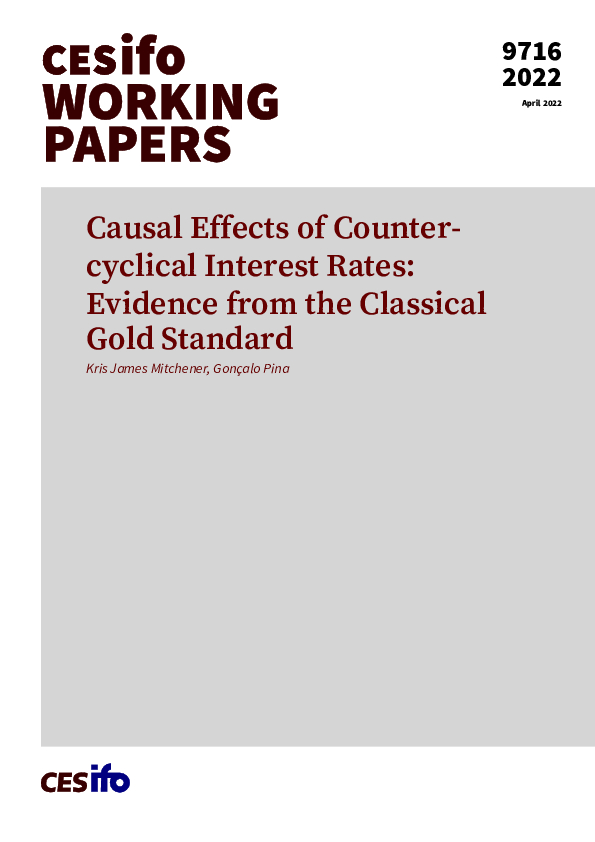Causal Effects of Countercyclical Interest Rates: Evidence from the Classical Gold Standard
CESifo, Munich, 2022
CESifo Working Paper No. 9716

We estimate the causal impact of countercyclical interest rates on macroeconomic outcomes in open economies. To identify countercyclical interest rates, we construct a new database of short-term interest rates, principal exports, and international commodity prices for 40 economies from 1870 to 1913. This era of capital mobility, nominal anchors, specialization and trade integration, exposed economies to multiple exogenous demand-side shocks. Specialization and trade integration subjected economies to a “commodity lottery” in the form of price fluctuations in world markets. Capital mobility and a currency peg exposed them to interest-rate movements originating in the U.K., the largest economy and linchpin of the classical gold standard. We identify (i) positive effects of commodity-export prices on real GDP and the domestic price level and (ii) negative effects of exogenous changes in short-term interest rates on the same variables. We then show that countercyclical interest rates, defined relative to export-price shocks, stabilized both output and the domestic price level. This stabilization was more effective for the price level than for output.
Fiscal Policy, Macroeconomics and Growth
Monetary Policy and International Finance